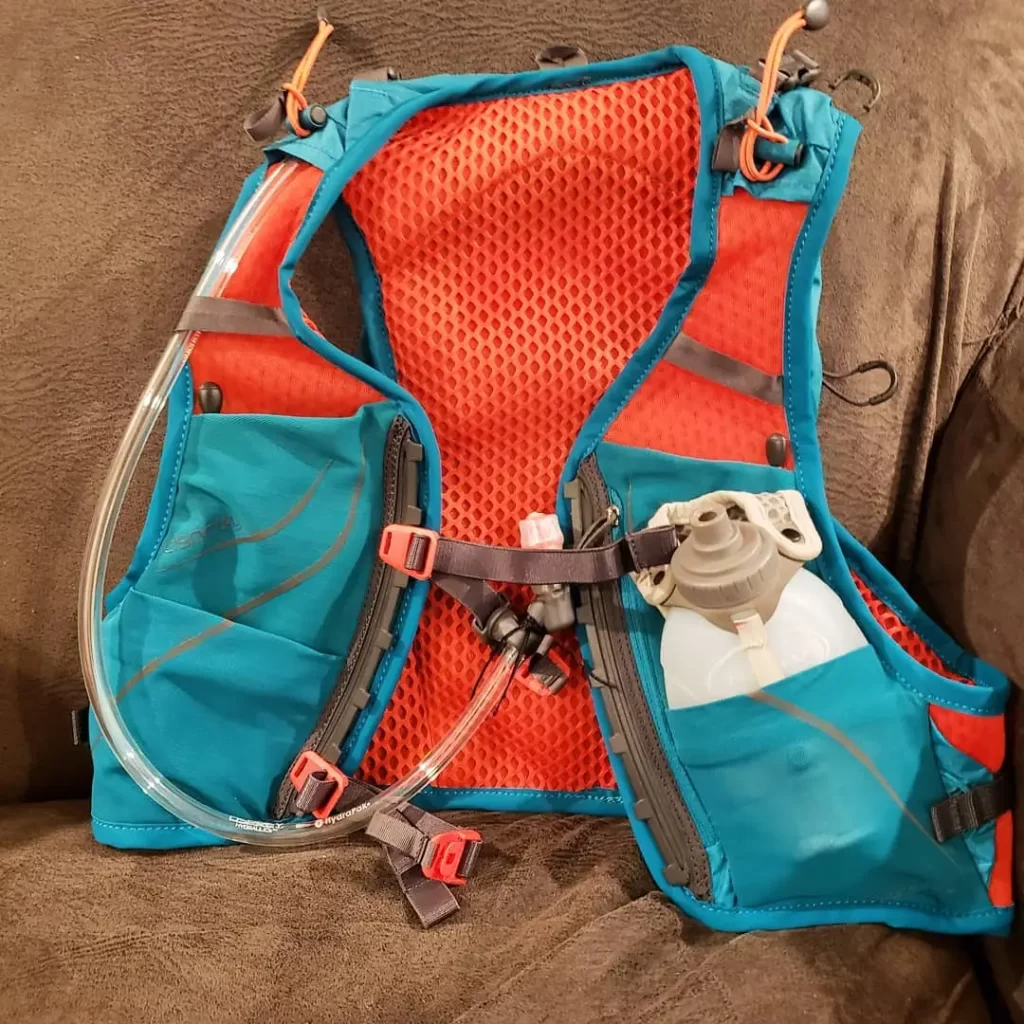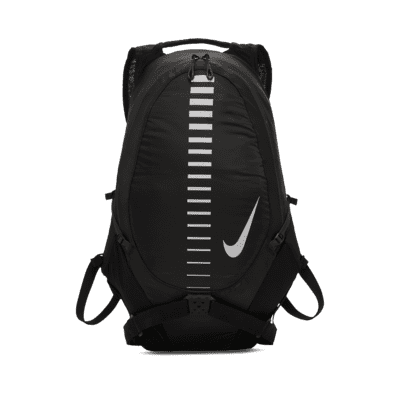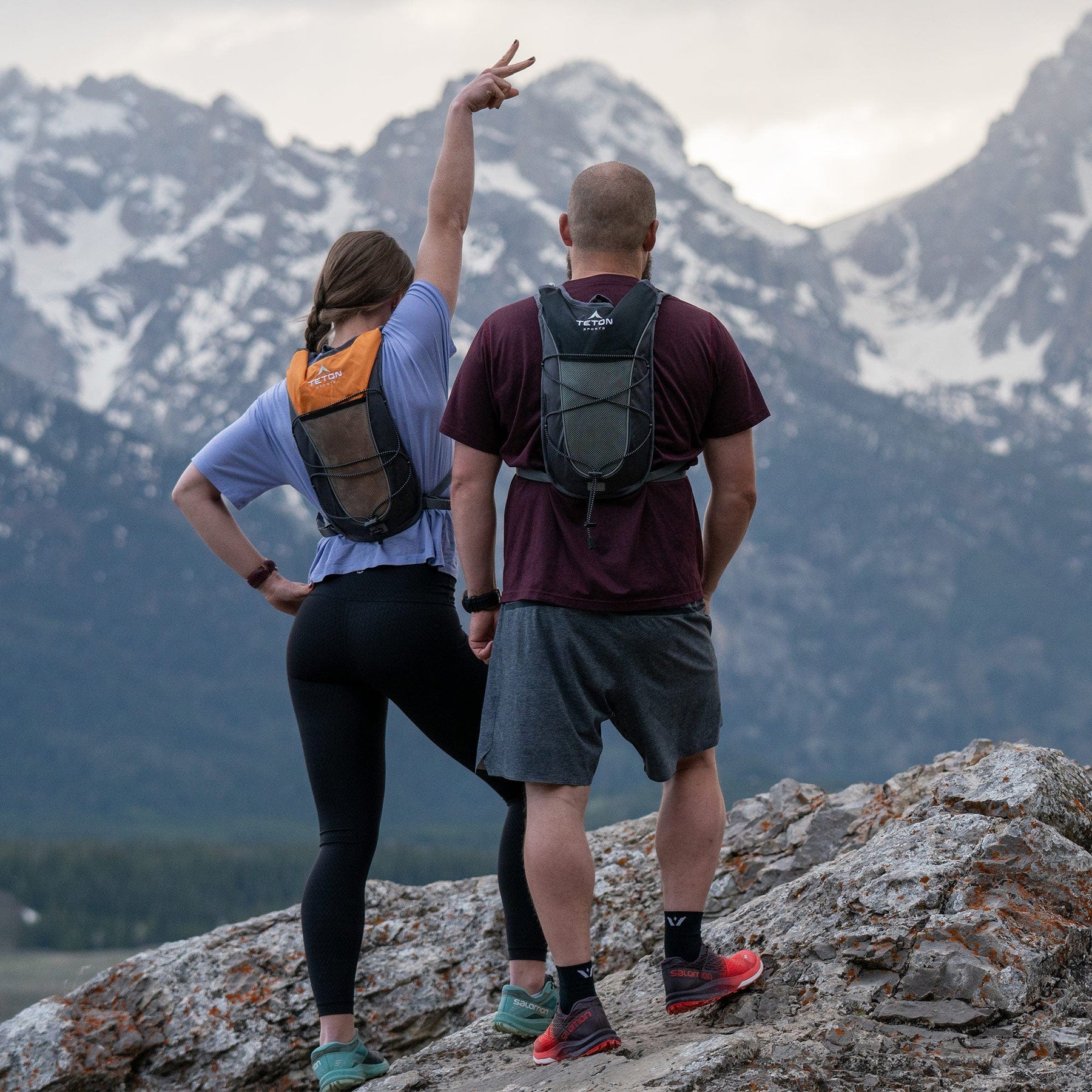Whether you’re dashing through urban landscapes on your daily commute, navigating the rugged terrails on a scenic trail run, or embarking on a long-distance running adventure, the humble running backpack emerges as an indispensable companion. In the dynamic world of running, where each stride counts, and comfort is king, the right backpack doesn’t just carry your essentials – it enhances your running experience.
Running backpacks bridge the gap between functionality and comfort, making them a crucial piece of gear for a diverse array of activities. For the urban run commuter, they offer a practical solution for transporting work essentials – think laptops, documents, and a change of clothes – seamlessly blending the worlds of fitness and professional life. Meanwhile, on the winding paths of nature trails, these backpacks transform into survival kits, housing hydration packs, nutrition bars, and emergency gear, all while ensuring you remain agile and unencumbered.
As you push your limits over longer distances, the significance of a well-designed running backpack becomes even more pronounced. Here, it’s not just about carrying supplies; it’s about having a reliable partner that sits snugly against your back, defying gravity and minimizing bounce, thus allowing you to maintain your form and focus.

In essence, the best running backpacks are those that you barely notice – they become a part of you. They should not just carry your world but also enhance your running journey every step of the way. In this guide, we delve into the world of running backpacks, exploring options that cater to every kind of runner, from the urban commuter to the trail-blazing adventurer, ensuring that your next run is as efficient and enjoyable as possible. Let’s find the perfect running backpack for you, one that complements your running style and meets your unique needs.
Best Backpacks for running
- Best Overall: Osprey Dyna 6 Running Hydration Backpack
- Best for Long Adventures: CamelBak Octane 22 – Best for Long Adventures
- Best for Run Commuting: Nike Run Backpack
- Best Budget Option: TETON Sports TrailRunner 2.0 Hydration Pack
- Best for Women: Sweaty Betty Commuter Backpack
Osprey Dyna 6 Running Backpack – Best Overall
As an avid runner who has tried various backpacks over the years, the Osprey Dyna 6 Running Hydration Backpack has genuinely impressed me and stands out as the best overall option for several reasons.
First Impressions and Design
Right out of the box, the Osprey Dyna 6 makes a strong impression with its sleek design and runner-focused features. It’s clear that Osprey designed this with the needs of a distance runner in mind. The backpack offers a full range of motion, crucial for those long runs where comfort is key.

Performance on the Run
During my runs, I found the Dyna 6 to be exceptionally comfortable. Thanks to its adjustable straps, the backpack contours perfectly to the body, allowing for a personalized fit that minimizes bounce. This feature is particularly beneficial on trail runs where stability is essential. The backpack’s lightweight design ensures that it doesn’t weigh you down, making it suitable for short- and long-distance runs.
Storage and Accessibility
One of the standout features of the Dyna 6 is its ample storage capacity. Despite its compact appearance, it can comfortably hold all my essentials – hydration bladder, nutrition, phone, keys, and even an extra layer of clothing. The strategically placed pockets provide easy access to items without the need to stop and search through the bag.
Hydration System
For a distance runner, hydration is key. The Dyna 6’s hydration system is top-notch, with an easy-to-use tube that ensures I can stay hydrated on the move without any hassle.
Durability and Maintenance
After several runs, the backpack has shown excellent durability, efficiently handling various weather conditions. Cleaning and maintenance have been straightforward, another plus for any busy athlete.
Why It’s the Best Overall
Compared to other backpacks I’ve used, the Osprey Dyna 6 stands out for its balance of comfort, storage, and stability. It caters to the essential needs of a distance runner without any unnecessary frills. It’s a backpack that understands and adapts to the dynamics of running, which is why I rate it as the best overall.
Pros:
- Exceptional comfort and ergonomic design.
- Ample storage capacity without being bulky.
- Excellent bounce prevention, ensuring stability during runs.
- User-friendly hydration system.
- Durable and easy to maintain.
Cons:
- The price point may be higher compared to some other options.
- Limited colour options may appeal to only some runners.
CamelBak Octane 22 – Best for Long Adventures
As someone who regularly embarks on long running adventures and also uses running as a means of commuting, I’ve found the CamelBak Octane 22 to be an exceptional ally. Its design caters to the diverse needs of both wilderness trails and urban landscapes, making it an ideal choice for those who crave versatility in their running gear.
Adaptable Storage and Design
My experience with the Octane 22 has been one of discovering its incredible adaptability. The backpack comes with a two-litre bladder, perfect for long, remote runs where hydration is crucial. The bladder’s easy-access design meant I could hydrate without breaking stride. For city commuters, the backpack’s compartment is spacious enough to safely house my 15-inch laptop, along with other work essentials.
Comfort and Fit
Comfort is paramount on extended adventures, and the Octane 22 doesn’t disappoint. The backpack sits snugly against the back, with adjustable straps that provide a secure fit without restricting movement. This has been particularly useful on uneven terrain, where stability is key.
Versatility for Different Scenarios
What sets the Octane 22 apart is its ability to transition seamlessly from a trail-running pack to a commuter-friendly backpack. Whether it’s carrying extra layers and food for a day on the trails or packing a change of clothes for the office, this backpack handles it all with ease.

Why It’s the Best for Long Adventures
Compared to other backpacks I’ve used, the Octane 22 stands out for its sheer versatility and capacity. Finding a backpack that feels equally at home in nature and the city is rare. The inclusion of the hydration bladder is a significant plus for long-distance runners.
Pros:
- Versatile design suitable for both trail runs and urban commutes.
- Spacious storage, including a compartment for a 15-inch laptop.
- Included two-litre hydration bladder for easy hydration.
- Adjustable straps offer a secure and comfortable fit.
- Durable construction suited for varied weather conditions.
Cons:
- The backpack might feel slightly bulky for shorter runs or minimalistic runners.
- The price point is on the higher end compared to simpler running backpacks.
Nike Run Backpack – Best for Run Commuting
As someone who frequently runs to work, finding a backpack that bridges the gap between performance and practicality has been challenging. The Nike Run Backpack, acclaimed as the best for run commuting by Verywell Fit, has been a game-changer for me, and here’s why.
Design and Fit for the Urban Runner
From my first run commute with the Nike Run Backpack, its design impressed me. It’s sleek yet functional, offering a secure fit crucial for running through bustling city streets. The backpack contours well to the body, and its adjustable shoulder, sternum, and waist straps ensure it stays put, minimizing any jarring movement.
Ample Storage with Thoughtful Features
The storage capability of this backpack is another aspect where it shines. It houses a laptop sleeve, which is a must for any run commuter. There’s enough room for work essentials, a change of clothes, and even a pair of shoes. The reflective elements on the backpack are a thoughtful addition, enhancing visibility during early morning or evening runs.
Why It’s the Best for Run Commuting
The Nike Run Backpack stands out for its ergonomic design and thoughtful storage solutions compared to other backpacks I’ve tried for run commuting. It strikes a perfect balance between being lightweight yet spacious, comfortable yet sturdy. The addition of reflective elements shows an understanding of the urban runner’s needs, which many other backpacks overlook.
Pros:
- Ergonomic design offers a secure, bounce-free fit.
- Ample storage, including a protected laptop sleeve.
- Reflective elements for increased visibility in urban environments.
- Comfortable for long distances, with adjustable straps for a custom fit.
- Durable and weather-resistant material.
Cons:
- The style-forward design might not appeal to all runners.
- Limited colour and design options.
- The price point may be higher compared to more basic options.
TETON Sports TrailRunner 2.0 Hydration Pack – Best Budget Option
As a distance runner who often ventures into long, challenging runs, finding a hydration pack that meets both budget and functionality needs has been a priority, the TETON Sports TrailRunner 2.0 Hydration Pack, recognized as the best budget option by Verywell Fit, has been a pleasant surprise, combining affordability with impressive performance.
Functionality and Design
From my initial use, the TrailRunner 2.0 stood out for its no-frills, functional design. It’s lightweight, making it ideal for long runs where every ounce matters. The pack comes with a 2-litre hydration bladder, a key feature for distance runners like me who need consistent hydration. The bladder’s wide opening makes it easy to fill, and the bite valve has been leak-free and convenient during runs.
Comfort and Fit
Despite its budget-friendly price, the TrailRunner 2.0 doesn’t compromise on comfort. The adjustable shoulder straps ensure a snug fit, reducing bounce and movement. I’ve worn it on various terrains and speeds, and it’s remained stable and comfortable throughout.
Why It’s the Best Budget Option
In the realm of budget hydration packs, the TrailRunner 2.0 surpasses its competitors by striking an excellent balance between price, functionality, and comfort. It’s an unassuming pack that delivers on its promise without unnecessary extras that often inflate the cost.
Pros:
- Affordable, offering great value for money.
- Lightweight design, ideal for long-distance running and hiking.
- Includes a 2-litre hydration bladder with an easy-to-use bite valve.
- Adjustable straps for a comfortable, bounce-free fit.
- Simple, functional design catering to the essential needs of hydration on the go.
Cons:
- Limited storage capacity for anything beyond the hydration bladder and small essentials.
- The durability may not match higher-end models, especially in extreme conditions.
- Basic design without extra features like multiple compartments or advanced back ventilation
Sweaty Betty Commuter Backpack Review – Best for Women
My Wife tested the Sweaty Betty Commuter Backpack, and as a woman who often runs to work, finding a backpack that combines practicality with style has been essential. The Sweaty Betty Commuter Backpack, designed specifically for women commuters, has been a delightful discovery in my quest for the perfect run-commute gear.
Tailored for the Female Commuter
From the first use, it was evident that this backpack was crafted with the female form in mind. The padded shoulder straps are a standout feature, offering a comfortable fit without digging into my shoulders. The cool mesh back is another thoughtful touch, providing excellent breathability, which is a boon on longer or more intense runs.
Functional and Fashionable
What truly sets the Sweaty Betty Commuter Backpack apart is its blend of functionality and chic design. It’s roomy enough to fit my laptop, a change of clothes, and other work essentials, yet it maintains a sleek profile that doesn’t look out of place in a professional setting.
Why It’s the Best for Women Who Commute
In comparison to other commuter backpacks she’s tried, this one excels in understanding the unique needs of women. It’s more than just a downsized version of a men’s backpack; it’s a thoughtfully designed accessory that addresses comfort, style, and practicality.
Pros:
- Ergonomically designed for women, with padded shoulder straps and a cool mesh back for comfort.
- Stylish design that transitions smoothly from a running accessory to a work-appropriate bag.
- Sufficient storage capacity, including a laptop compartment and additional pockets for organization.
- Lightweight yet durable materials suitable for daily use.
Cons:
- The stylish design might come with a higher price tag compared to more basic options.
- It may not have the same level of technical features as a dedicated running or hiking backpack.
- Limited colour options may not cater to all personal styles.
Why a Running Backpack is Essential
In the world of running, the importance of a well-equipped running backpack cannot be overstated. For runners, whether they’re winding through city streets, tackling rugged trails, or clocking miles on long-distance routes, a running backpack is much more than a convenience—it’s a necessity.
Carrying Essentials: The primary function of a running backpack is to carry essentials. For many runners, hydration is paramount. A backpack with a dedicated hydration bladder or space for water bottles ensures that you stay well-hydrated throughout your run. Beyond water, these backpacks provide space for nutrition—energy gels, bars, and electrolyte supplements—vital for maintaining energy levels, especially during longer runs. They also offer secure storage for personal items like keys, phones, and wallets, ensuring peace of mind so runners can focus on the path ahead.
Versatility for Different Needs: Running backpacks come in various forms, each tailored to specific running scenarios. For instance, hydration packs are a staple for trail runners and long-distance athletes. These packs are designed to be lightweight and ergonomic, providing easy access to water without disrupting the runner’s momentum. On the other hand, commuting backpacks blend functionality and style, spacious enough to carry work essentials, including laptops and documents, while still being comfortable to run with.
The design of a running backpack also plays a crucial role in comfort and efficiency. Backpacks with adjustable straps, breathable materials, and ergonomic designs ensure a snug fit, reducing bounce and minimizing the risk of chafing. For trail runners, packs with additional compartments for safety gear, such as first aid kits and foil blankets, are invaluable. Conversely, urban runners might prefer backpacks with reflective elements for increased visibility during night runs.
Running backpacks serve as an extension of the runner, accommodating a wide range of needs from basic hydration to full gear carriage for longer excursions. Whether you’re an urban runner weaving through cityscapes, a trail enthusiast conquering rugged terrains, or an endurance athlete testing your limits, the right running backpack can significantly enhance your running experience, providing both functionality and freedom.
Key Features to Look For in a Running Backpack
Selecting the right running backpack is a decision that hinges on a balance of functionality and comfort. Here are the key features to consider when choosing the best running backpack for your running needs:
- Storage Capacity
- Vital for Endurance: Storage capacity is critical for long-distance runners and trail adventurers. You’ll need space for hydration systems, nutrition, spare clothing, and potentially emergency equipment. A backpack with ample storage capacity ensures you can carry all necessary items without compromising comfort.
- Minimalism for Speed: Conversely, if you’re a speed-focused runner or engaged in shorter training sessions, a minimalist design with just enough space for basic essentials like keys, a phone, and a small hydration bladder might be more appropriate.
- Comfort and Ergonomic Design
- Body-Synced Fit: Comfort is paramount. A backpack should fit snugly against your body, moving in sync as you run. Ergonomic designs that contour to the spine and distribute weight evenly are essential to prevent strain and discomfort.
- Gender-Specific Options: Many brands offer gender-specific designs that cater to different body shapes and sizes, ensuring a more personalized and comfortable fit.
- Weight
- Lightweight for Performance: The backpack’s weight can significantly impact your running efficiency. A lightweight backpack reduces the strain on your body, allowing for a more natural running form. However, it’s important to balance weight with durability and storage needs.
- Adjustable Straps
- Customizable Fit: Adjustable straps are crucial for a secure and comfortable fit. They allow you to tailor the backpack to your body, minimizing bounce and movement while running. This is especially important for trail runners who navigate uneven terrain.
- Material Durability
- Weather and Wear Resistant: The backpack’s material should be durable enough to withstand different weather conditions and the wear and tear of regular use. Look for water-resistant materials if you frequently run in rainy conditions.
- Breathability Matters: Additionally, materials that offer breathability are essential to avoid discomfort and excessive sweating, especially on longer runs.
- Additional Features for Specific Needs
- Hydration System Compatibility: For long-distance runners, compatibility with hydration systems is a non-negotiable feature.
- Reflective Elements for Safety: Runners who train in low-light conditions should look for backpacks with reflective elements to enhance visibility.
- Accessibility and Organization: Consider backpacks with well-placed pockets and compartments for easy access to items without needing to stop or slow down.
Considerations for Different Types of Runners
When it comes to choosing the right running backpack, the needs vary significantly based on the type of runner you are. Whether you’re a commuter, a trail runner, or a distance runner, each category has specific requirements that should guide your backpack choice.
- Commuter Runners
- Storage and Organization: Commuter runners need backpacks that offer enough space for work essentials like a laptop, documents, and possibly a change of clothes. Look for backpacks with multiple compartments for organization and easy access.
- Comfort and Stability: Since you might be carrying more weight, a backpack with padded shoulder straps and a supportive back panel is crucial. Adjustable straps can help distribute weight evenly and reduce bounce while running.
- Visibility and Weather-Resistance: Reflective elements for visibility are important for those running in urban settings, especially during early mornings or evenings. Also, consider water-resistant materials to protect your electronics and documents from weather elements.
- Trail Runners
- Durability and Lightweight Design: Trail runners should opt for backpacks made from durable materials that can withstand rough terrain and weather conditions. However, the backpack should also be lightweight to not hinder agility and speed.
- Hydration System: A built-in hydration system is crucial for trail runners, as access to water can be limited. A backpack with a hydration bladder or easy access to water bottles is essential.
- Safety Features: Extra pockets for emergency gear like a whistle, first-aid kit, and a space blanket are important. Also, consider backpacks with attachment points for trekking poles or other trail gear.
- Distance Runners
- Minimalist and Ergonomic Design: Distance runners should look for minimalist designs that avoid unnecessary weight. An ergonomic fit that moves with the body to prevent chafing and discomfort over long distances is essential.
- Hydration and Nutrition Storage: Adequate space for hydration and nutrition is important. Even with minimalist designs, there should be accessible pockets for energy gels, bars, and hydration.
- Breathability: Given the longer duration of use, a backpack with breathable materials is crucial to prevent excessive sweating and ensure comfort.
Maintenance and Care of Running Backpacks
Proper care and maintenance are key to ensuring your running backpack remains a reliable companion on your runs. Here are some tips to extend the lifespan of your running backpack, keeping it in prime condition:
- Regular Cleaning
- Post-Run Wipe Down: After each run, especially if you’ve been sweating a lot or running in muddy conditions, give your backpack a quick wipe down with a damp cloth to remove surface dirt and sweat.
- Deep Cleaning: Periodically, you should do a more thorough cleaning. Empty all pockets and compartments, then gently wash the backpack with mild soap and warm water. Use a soft brush or cloth to scrub away any stubborn dirt. For hydration bladders and tubes, use specialized cleaning brushes and drying racks.
- Drying Properly
- Air Dry: Always air dry your backpack. Hang it upside down in a well-ventilated area away from direct sunlight. Avoid using a dryer, as the intense heat can damage the materials and straps.
- Storing Correctly
- Keep It Dry and Cool: Store your backpack in a dry, cool place away from direct sunlight. Prolonged exposure to sunlight can degrade the fabric and colours.
- Don’t Overpack When Storing: Avoid storing the backpack while it’s packed full, as this can stretch the fabric and straps. Empty it out and loosely pack it to maintain its shape.
- Hydration System Care
- Regular Cleaning: Clean hydration bladders and tubes after every use to prevent mould and bacteria growth. Use a mild soap solution and rinse thoroughly.
- Dry Completely: Ensure the hydration system is completely dry before storing. You can use paper towels or specialized drying racks to absorb moisture.
- Checking for Wear and Tear
- Regular Inspections: Regularly inspect your backpack for any signs of wear and tear, such as fraying straps, loose threads, or tears in the fabric. Early detection can prevent small issues from becoming big problems.
- Repairs and Replacements
- DIY Repairs: Simple repairs like sewing up small tears or tightening loose straps can often be done at home.
- Professional Repairs: For more complex issues, consider taking your backpack to a professional or contacting the manufacturer for repair services.
- Odor Prevention
- Ventilation: Ensure your backpack is well-ventilated and dry after each use. If odours develop, you can use a fabric freshener designed for sports equipment or place a deodorizing sachet inside the backpack.
Conclusion
Selecting the right running backpack is not just about choosing a functional accessory; it’s about finding a companion that aligns with your specific running needs and preferences. Throughout this guide, we’ve explored how different types of runners – commuters, trail enthusiasts, and distance athletes – each require unique features in a backpack. From the ample storage and organization needed for run commuting to the durability and hydration systems essential for trail running, and the minimalist, ergonomic designs ideal for long-distance endeavours, it’s clear that the “best” running backpack is highly individual.
Your choice should be informed by a blend of personal requirements and running habits. Consider the typical distance of your runs, the terrain you traverse, and what you need to carry. Factor in the comfort, fit, and functionality that will enhance your running experience. Remember, the right backpack can elevate your performance, providing not only convenience but also comfort and confidence on your runs.
As you weigh your options, reflect on the insights provided in this guide. Think about the maintenance and care each backpack requires and whether it aligns with your lifestyle. A running backpack is an investment in your running journey, and the right choice will be a dependable ally, mile after mile.









